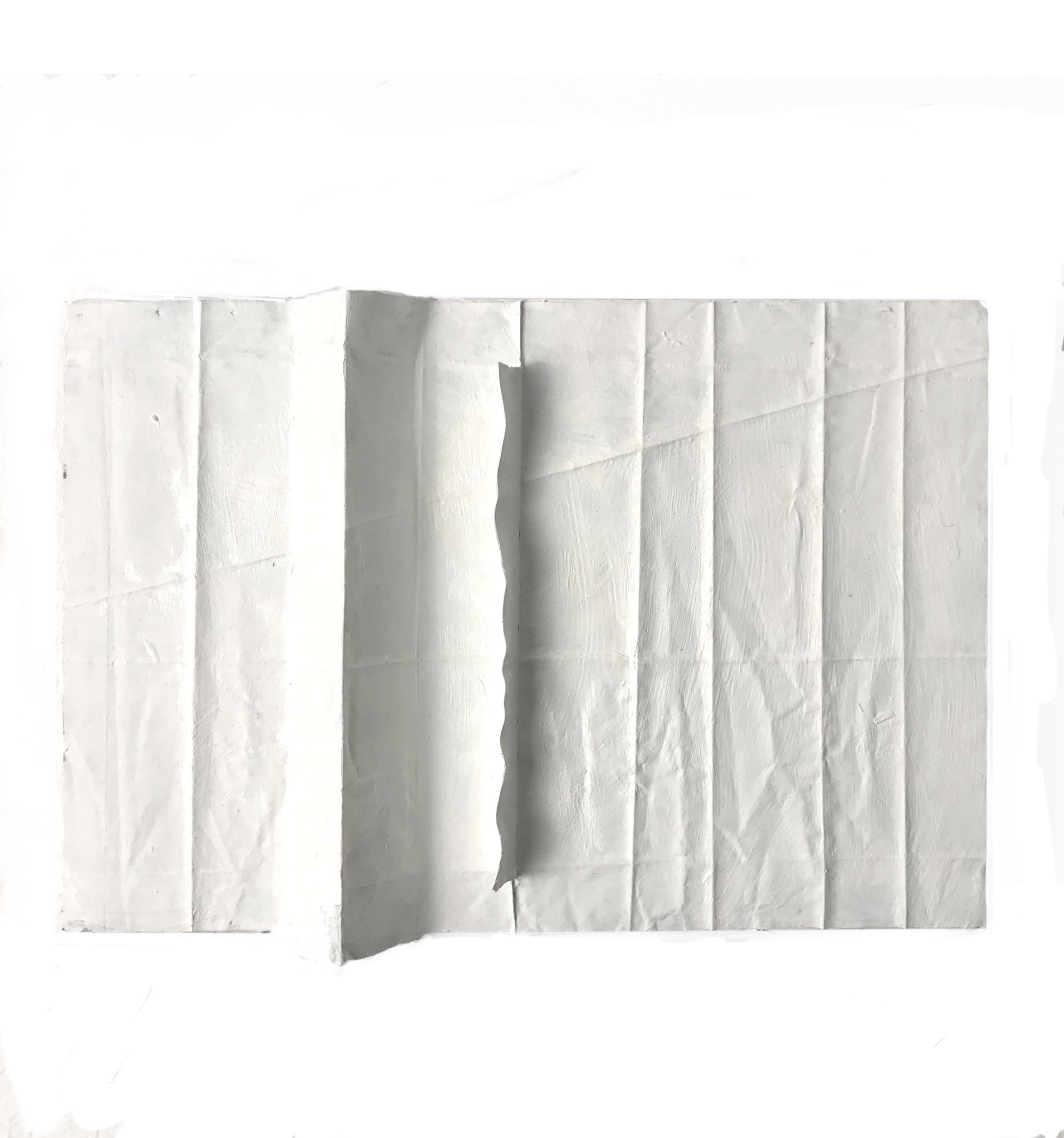
Practice
Hilary Mantel writes about ‘what’s left in the sieve when the centuries have run through it - a few stones, scraps of writing, scraps of cloth’. And from these she constructs her narratives and her characters.
In our epoch the ‘scraps left in the sieve’ have become islands of plastic the size of France floating across the oceans. These ‘scraps’ are the material basis of my art practice transformed into 2D and 3D pieces. What I make isn’t going to save the planet but there is perhaps something positive in repurposing them in this way.
I work with waste material, packaging, paper, tar paper, cardboard and mylar as my substrates. Cardboard is ubiquitous, already recycled, and a great stand in for almost any other material without want of workshop.
Mylar is a forever land-fill material, often coated in aluminium. The metallic-coated side can be primed with gesso and painted and abrased. The non-stick side can only be sewn, pinned, or joined with double-sided tape.
The small works are made from mylar coffee packets, the large ones from bulk storage packets. They are mounted on laminated cardboard, the vertical rendering of the non-corrugated side adding a sense of leaves or layers beneath.
Crumpling, folding and creasing transform into a material with a presence of a past. Sometimes when I’m working this plasticised and metal-coated fabric it feels like folding the tablecloth for the Last Supper. And this is the heart of it. Works that resonate are fragments, inferences that might echo from a half-remembered past. They tend to abstraction, not as a means of revealing a reductive truth, but as triggers to each viewer’s associations.